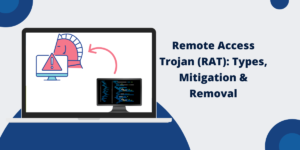Having a business website goes beyond being a storefront; it forms the core of your online identity and presence as a company or entrepreneur. No matter if you’re starting off or already established in the industry world. Having a planned website plays a role in drawing in customers and enhancing brand growth by generating leads.
Before delving into the design and technical aspects of the website creation process lies an important often neglected step known as the discovery phase.
If you’re looking to set up a website for your business or venture, into the world of entrepreneurship with a website business idea in mind it’s essential to kickstart the process with a thought out strategy. Engaging in an exploration journey guarantees that your website is tailored with the functionalities in sync with your business objectives and ready for future growth. Skipping this phase increases the chances of unveiling an appealing site that falls short in delivering tangible outcomes.
A lot of businesses opt for product discovery services to improve their website ideas and outline the needs while setting up a plan for development. This approach prevents revisions. Guarantees that all elements of your site—ranging from user experience to backend operations—align with your business goals.
The Importance of Website Discovery
Creating a website without a strategy is similar to building a house without plans. You could have an attractive end result but risk lacking durability and strength, in its foundation.
- Who are you trying to reach with your message?
- What objectives should your website aim to achieve?
- What features and connections are you looking for?
- How do you envision the development of your website as your business expands over time?
Tips for Creating Your Business Website
Identify the Purpose and Objectives of Your Website
When starting to create a business website the initial task is to determine your goals and objectives, for the sites purpose which varies based on your business type with aims such, as:
- For businesses offering services and consulting firms to succeed and attract clients effectively to their website is essential to have optimized websites that drive inquiries and conversions.
- For e-commerce sales to thrive shops must have product catalogs, shopping carts and secure payment processing, in place.
- Establishing brand recognition is essential for startups and small businesses, which often rely on websites to build trust and demonstrate their knowledge and capabilities to customers.
- Customer service is crucial, for businesses as they might require portals, for inquiries or FAQs and live chat options to help their customers efficiently.
In the case of a business website catering to a law firm’s needs to build credibility and foster client trust by featuring case studies and testimonials while also emphasizing the importance of consultation through a call to action prompt on the website homepage. Conversely for a restaurant’s website design emphasis would be on facilitating reservations for patrons accessible menu display and seamless integration, with food delivery services to enhance user experience and convenience.
Starting with an understanding of your objectives aids, in choosing the elements and approach, for your content strategy.
Step 1: Know Who You Are Trying to Reach
When building a website it’s important to prioritize the user experience foremost if you want it to be successful.
- Who makes up your customer base? Their age groups and locations, as what interests them?
- Are they users who browse on their devices and prefer direct access to information?
- What issues does your website aim to address?
When creating a website, for customers who’re knowledgeable about technology trends and products focus on incorporating design elements and advanced search functionalities to enhance user experience. However, if your target audience consists of individuals, prioritize simplicity, intuitive navigation, and legible fonts to make the site more user-friendly.
Step 2: Evaluate the Websites of Companies
Taking a look at your competitors’ actions can assist you in enhancing your website strategy. Take the time to study the competitors within your industry and examine their strategies:
- Organization of their website well, as how users move through it.
- The kinds of material they share
- They provide services such as chatbots and booking systems along with tools.
- Their areas, for improvement
This study can assist you in pinpointing ways to set your website apart from others in the field; for instance if rival sites are sluggish to load or sport layouts you could emphasize enhancing performance and embracing aesthetics to distinguish yourself better.
Step 3: Outline the Features and Functions of Your Website
After envisioning your website’s purpose clearly set out to define its features, for success. Like must-have elements such, as:
- Forms, for getting in touch and generating leads.
- Engage in chat, for customer assistance.
- If you intend to sell items make sure to include e-commerce features on your website.
- Scheduling systems, for businesses that provide services.
- Registered users can utilize customer portals to handle their accounts or access content.
Consider the aspect of scalability too! If you kick off with a website but foresee growth ahead of you; make sure the system is capable of accommodating extensions as well. Take the case of a virtual fitness coach who might kick things off with blog posts and then smoothly incorporate subscription-based exercise routines, down the road.
Selecting the Technology Stack is Crucial
Choosing the tools and technologies is crucial, for ensuring performance and security while also simplifying management tasks important factors to bear in mind are:
- When it comes to building websites. Whether using platforms, like WordPress and Shopify or opting for custom development. There’s a trade-off, between convenience and flexibility that you’ll need to consider as you make your decision.
- When managing content online (Content Management System) you might require platforms, like WordPress or Webflow or even a headless CMS based on your content requirements.
- Website hosting and security are crucial, for keeping your site running securely with a focus on reliability and speed.
Picking the technology framework could result in sluggish website loading times. Expose you to potential security risks while also imposing constraints on your future scalability possibilities. Consulting with developers can assist you in making a decision that aligns with your long-term growth objectives.
Step 4: Develop a Sitemap and Wireframes for Your Website
Before starting the development process of your websites pages and organization structure consider creating a sitemap. This will assist in organizing the content and maintaining a user navigation flow.
Before diving into coding your website layout design process begins with wireframes. Sketches that offer a representation of the page structure to refine user experience and functionality aspects in advance.
Check Every Aspect Thoroughly Before the Release
Before launching a website without testing in place could lead to issues such as links or slow loading times that may affect usability negatively.
- Function Testing is essential to confirm that forms are functioning correctly alongside buttons and features.
- Ensuring that the website works well on all types of devices is crucial, for an user experience.
- Improving Performance Matters a Lot. Users Get Annoyed, with Slow Websites. It Can Mess Up Your Search Rankings!
- Lets set up SEO and analytics by installing tracking tools to observe visitor actions and enhance performance.
Final Thoughts
Creating a business website goes beyond aesthetics; it involves a strategy that matches your objectives and caters to your target audience’s requirements effectively.
If you need advice and support services Clockwise Software is known for its expertise in product research and website creation to assist companies in creating solutions that suit their requirements.
By following these guidelines when working on your website projects you can proceed with confidence knowing that you are establishing a groundwork for your endeavors.

Priya Mervana
 Verified Web Security Experts
Verified Web Security Experts
Priya Mervana is working at SSLInsights.com as a web security expert with over 10 years of experience writing about encryption, SSL certificates, and online privacy. She aims to make complex security topics easily understandable for everyday internet users.



